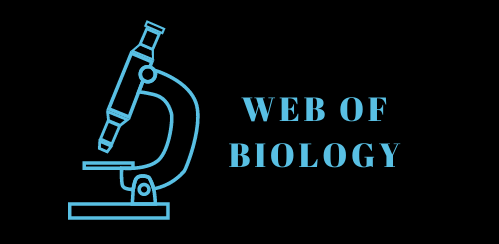 |
| Mammals: Black horse |
Mammals: Definition, classification, and morphology
Definition:
Classification of Mammals:
Types of Mammal Species:
Classification of mammals is a broad topic that describes the diversity and relationships between mammal species. In general, there are four sub-orders in modern evolutionary studies, such as monotremes, marsupials and primates, and siamangs. These major subdivisions are recognized by their anatomical, biochemical and physiological similarities. Based on this research, we have classified eight classes of mammals, including brawnerids, ungulates, rodentans, rodents, pangolins and porcupines, perches, sabers, wolves, apes and monkeys, and humans.
The main types of mammals are mammals, primates, birds, monkeys, orchids, bats, lorisids, monkeys, pangolins, owls and rabbits, etc. There is also a variety of other types of mammals (such as fish, amphibians, amphibia, snakes, lizards, birds, and birds), insects (such as fleas, arthropods, spiders, wasps, moths, locusts, jellyfish, dragonflies), reptiles (such as lemurs, primates, orchids), paranthropes, echinocutors, cactuses, etc.
There is also a variety of other types of mammals (such as fish, amphibians, amphibia, snakes, lizards, birds, and birds), insects (such as fleas, arthropods, spiders, wasps, moths, locusts, jellyfish, dragonflies), reptiles (such as lemurs, primates, orchids), paranthropes, echinocutors, cactuses, etc.
Morphology:
Basic body structure:
 |
| Mammals: Male and female lion |
Head:
Males have an enlarged head, including the brain region at the top of the skull. Males tend to have larger ears that are often bushed. A small nose and mouth are present in males. Males can be distinguished by having long upper limbs, sharp teeth and eyes, and red lips. Females usually have smaller horns, pink skin, and hair covered with black spots and white spots.
Male animals can identify themselves by these three visual traits and will prefer to mate only when they have them. The most common mammal’s ear usually has two rows of lobules. While women will not have any ear lobules nor do they have lobules on the nose. Female ears have a special structure of hollow cartilage and air sac, the base of which is called an ossicle.
Scents:
Males have different kinds of scent glands that are located behind the ear on the front part of the neck. Such glands include the vomeronasal gland (the auditory sac) and supratrachiasmatic duct (the auditory nerve). Both glands produce a substance called keratin that helps make sense of smells. Several types of keratin are produced as a result of aging and aging itself.
It is a naturally occurring protein in animals that comes from a type of cell, which makes proteins a useful source of oxygen. Keratin is essential to protect tissues from being affected by harmful chemicals. There is a wide range of smells including, carbon dioxide, water, heat, sugar, alcohol, pheromones, sex pheromones, lemon juice, fruit juices, mint, coffee, tea, milk, and smoke, among others. Most mammals have several aroma glands on the neck.
Reproduction:
Males have a long gestation time. After delivery, newborns generally take about half a year before they can move around. They have a gestation period of 12 weeks in primates, but in human beings, this time is 9 to 10 months. Mating of male mammals occurs at the end of their pregnancy, which means they are physically capable of reproducing the next generation within 24 to 48 hours. During this time, there is also the possibility of getting pregnant during gestation as well.
Allowing the baby to grow inside the mother’s womb for about 6 to 8 months is a key factor to consider if you want to get pregnant. Mating of a newborn is considered to occur between the second month of pregnancy and the third month of gestation in primates and humans respectively. Only after mating can the young then begin its breeding cycle.
Young mammals have a great potential to survive and develop into adults due to the absence of pathogens and parasites. Human beings can expect to experience sperm and ovary when breeding animals. Adult mammals with young offspring are expected to give birth once a year, sometimes even several times during the same year. This is because children that are born out of wedlock are genetically similar to the previous ones, and thus have little chance of rejection.
Thus, humans can get pregnant after having unprotected sexual relationships with other humans and can expect that their babies will have both parents. Animals can carry the genetic make-up of the previous and subsequent generations that can be used as possible markers to differentiate between individuals.
Life cycle:
Mammals have five stages of development that are known as egg, embryo, fetus, neonate, and adolescent. Eggs of mammals are mainly yolk sacs containing yolk and eggs, which are found under the shell or under the membrane of the abdominal cavity. When fertilized, an egg is formed during the first stage of development. Then a zygote is formed during the second stage of growth. Zygotes can be kept in the uterus and ejaculated by mammographic examination and ultrasound.
Babies are commonly found in the mother’s uterus because they can be transferred to a surrogate mother without causing a problem. Human beings can start creating life in the second week of pregnancy. Newborns are commonly found in the amniotic fluid which travels inside the heart. The fetal phases of mammals are divided into the trophic phase (the developmental stage we get from the placenta) and the fetal phase (which starts after the birth of a newborn baby).
Sexual behavior:
Human beings are social animals, as they have different kinds of sexual behaviors. Social learning involves associative learning and interaction and learning. Humans learn from their peers by observing behaviors, actions, and actions of others and imitating those behaviors in the same manner that we think is appropriate to behave appropriately.
Learning is a social process where we imitate the behavior that people exhibit because it serves us as a guide to become what we want to become. Through observational learning that occurs to us through imitation and social modeling, we acquire the necessary information on how to behave and what actions to perform to achieve our desired goal.
One of the basic human sexual behaviors includes: kissing, shaking hands, hugging, cuddling, and hugging. Interaction and modeling are important factors that enhance human sexual activity. Most mammals also show interest in sexual exploration like sexual play, bonding, affectionate behavior, and physical mating.
Various forms of sexual interactions are recorded in literature and recorded in animal behavioral studies. Many animal studies have been carried out to examine the relationship between these behavioral activities and sexual behavior. It has been demonstrated that the presence of male mammals is a significant predictor of various forms of sexual interactions in domestic ruminants.
Furthermore, female mammals were observed to display increased expressions of genes associated with reproductive hormones in both adult and immature ruminants. Human infants show a higher level of expression of the HTR1B gene than adults. Male rats showed differences between adult and infant rats in terms of HTR1B expression. Infant rats showed much less activation of the HTR1B gene than adults, thus, showing that juvenile males are less sexually motivated than adults. Infants showed increased levels of corticotropin-releasing hormone (CRH). In particular, cortisol (a stress hormone) is responsible for depression symptoms and anxiety. Cortisol is released when adrenocorticotropic hormone (ACTH) receptors in the adrenal glands such as ACTH-related antigen receptor (ADHR). Endocrine system functions like insulin resistance and infertility can arise. Male mice were observed to have an adrenal gland in the liver but this organ is not needed for testosterone production. Scientists may eventually explain why the liver is not needed in the case of testosterone production.
Behaviorism:
Psychology is defined as the science of mental disorders, mental illness, psychology, personality, mood, mental processes, cognitive abilities, and personality. Its study has attempted to describe, clarify, and predict the mind and behavior through experimental investigation. Psychologists have to deal with specific problems that can challenge the understanding of the mind and behavior.
Health issues:
Males can easily pass parasites and diseases to babies through their mothers. As a result, they need to constantly check their mother for infections that can affect the child and can lead to death.
In humans, most diseases are transmitted through close contact with an infected individual, by the transmission of fluids or secretions from an infected patient in the respiratory area, transfer of infectious material through hands or objects, discharge from wounds or from broken parts, and contamination of other areas. Due to the high reproductive rate of mammals, especially when breeding is involved, the risk of developing breast cancer or leukemia in pregnant women increases.
Another important factor to consider regarding health is the nutritional value of prey foods since many diseases are transmitted from one diet to another. Some humans have some dietary restrictions that can prevent the spread of certain viruses, so individuals must eat healthy and nutritious foods.
That's all about Mammals: Definition, classification, and morphology, if you have any queries, lemme know in the comment section below.







If you have any doubt, let me know.